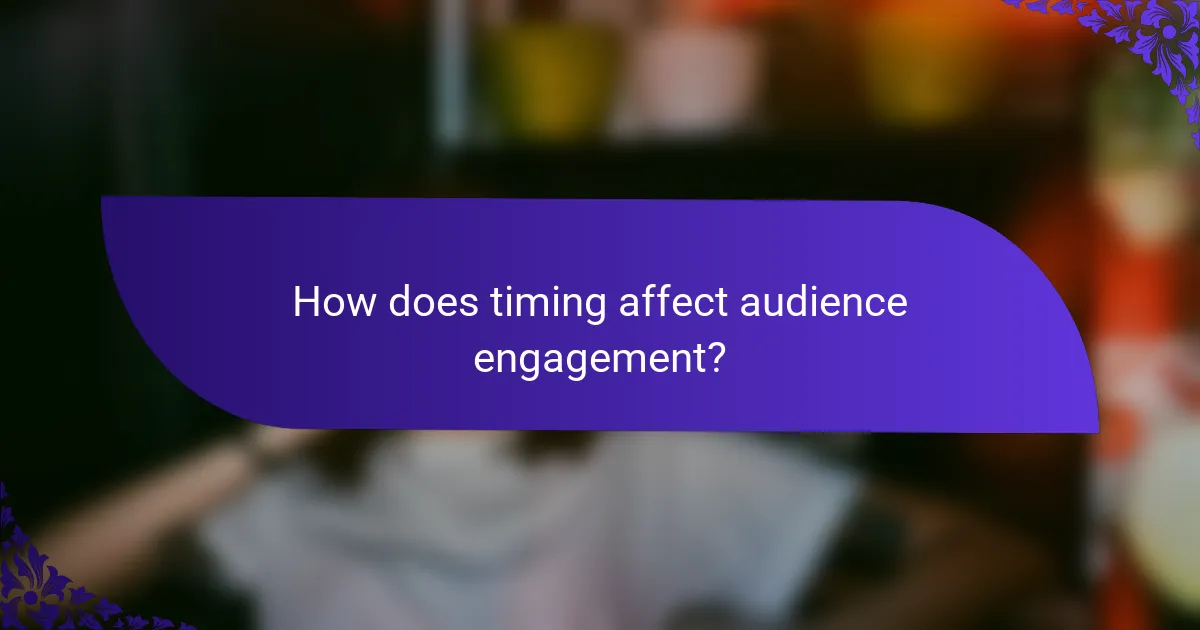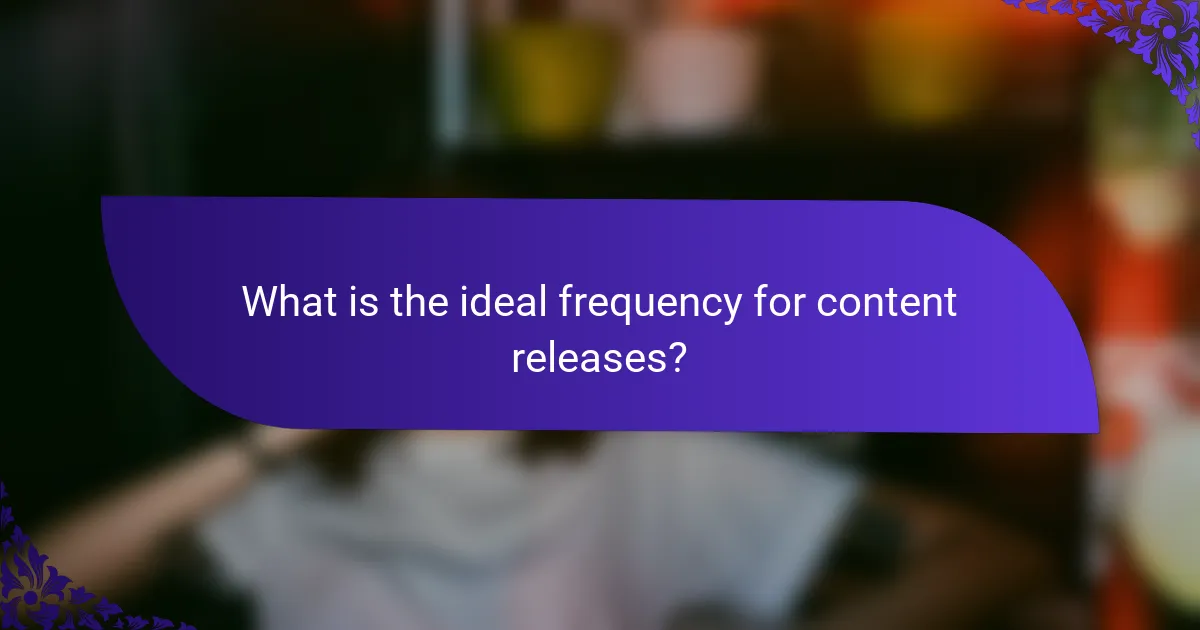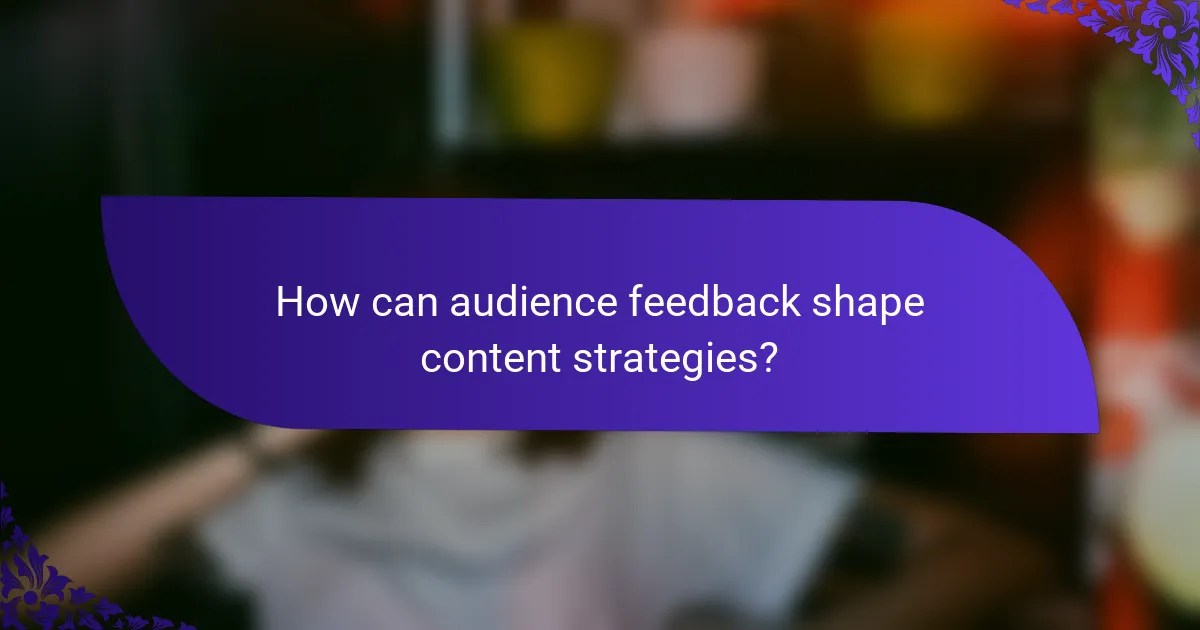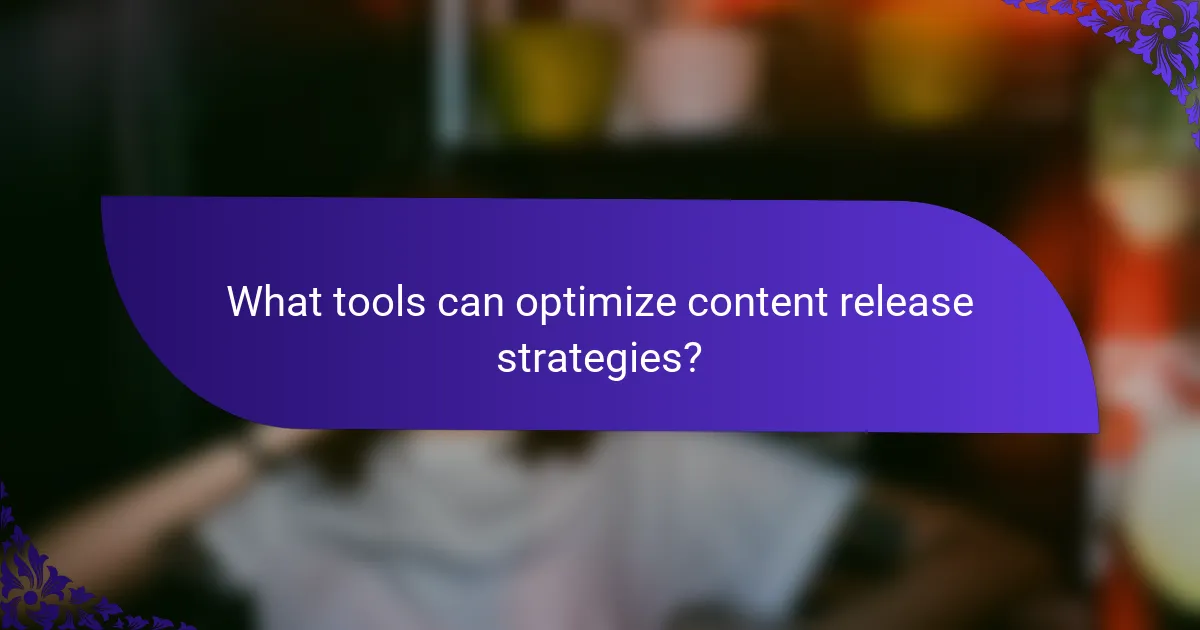Effective content release strategies are essential for maximizing audience engagement through careful consideration of timing, frequency, and audience understanding. By employing structured approaches like scheduled calendars and data analysis, you can significantly enhance the impact and reach of your content. Optimal timing for posting can lead to higher visibility and interaction rates, while a consistent release frequency tailored to your audience’s preferences ensures sustained engagement.

What are effective content release strategies for audience engagement?
Effective content release strategies focus on timing, frequency, and understanding your audience to enhance engagement. By implementing structured approaches, such as scheduled calendars and data analysis, you can optimize your content’s impact and reach.
Scheduled content calendars
Scheduled content calendars help streamline your content release process by planning ahead. They allow you to maintain a consistent posting frequency, which is crucial for audience retention and engagement. Aim for a regular schedule, such as weekly or bi-weekly, depending on your audience’s preferences.
Consider using tools like Google Calendar or Trello to visualize your content plan. This ensures that you can easily adjust your strategy based on upcoming events or audience feedback.
Data-driven timing analysis
Data-driven timing analysis involves examining audience behavior to determine the best times for content release. Utilize analytics tools to track when your audience is most active, which can vary by day of the week or time of day.
For example, if your audience primarily engages in the evenings, schedule your posts accordingly. Regularly review this data to adapt your strategy as audience habits evolve.
Audience segmentation techniques
Audience segmentation techniques allow you to tailor your content to specific groups within your audience. By categorizing your audience based on demographics, interests, or behaviors, you can create more relevant and engaging content.
For instance, if you have a diverse audience, consider creating targeted campaigns for different segments. This approach can significantly increase engagement rates, as content resonates more with specific groups.
Utilizing social media insights
Utilizing social media insights is essential for understanding how your content performs across platforms. Most social media channels offer analytics that reveal engagement metrics, such as likes, shares, and comments.
Regularly review these insights to identify trends and adjust your content strategy accordingly. For example, if a particular type of post garners high engagement, consider producing similar content more frequently.
Feedback loops for content adjustment
Feedback loops for content adjustment involve actively seeking and incorporating audience feedback into your content strategy. Encourage comments, surveys, or direct messages to understand what your audience values most.
Use this feedback to refine your content and address any gaps. For instance, if your audience expresses interest in a specific topic, prioritize that in your upcoming releases to enhance engagement and satisfaction.

How does timing affect audience engagement?
Timing significantly influences audience engagement by determining when your content is most likely to be seen and interacted with. Posting at optimal times can lead to higher visibility, increased interaction rates, and ultimately better performance of your content.
Peak engagement hours
Peak engagement hours refer to specific times when your audience is most active online. Generally, these hours vary by platform; for instance, social media platforms often see higher activity during lunch breaks and evenings. Analyzing your audience’s behavior can help identify these peak times, allowing you to schedule posts for maximum impact.
For example, if your target audience is primarily professionals, posting during weekdays around noon or after work hours may yield better engagement than early mornings or weekends. Tools like Google Analytics and social media insights can provide valuable data on when your audience is online.
Impact of time zones on content release
Time zones play a crucial role in determining the best times to release content, especially for global audiences. If your audience spans multiple regions, consider scheduling posts to accommodate various time zones, ensuring that your content reaches users when they are most likely to engage.
A practical approach is to identify the primary time zones of your audience and plan your content release accordingly. For instance, if you have a significant following in both the Eastern and Pacific time zones in the U.S., you might choose to post in the late morning to catch both audiences effectively.
Seasonal content relevance
Seasonal content relevance refers to how the timing of your content aligns with specific times of the year, holidays, or events. Creating content that resonates with current trends or seasonal themes can enhance engagement, as audiences are often more receptive to timely topics.
For example, publishing holiday-themed content in the weeks leading up to major holidays can capture audience interest and drive engagement. Additionally, consider local events or seasons that may affect your audience’s interests, such as summer vacations or back-to-school periods, to tailor your content accordingly.

What is the ideal frequency for content releases?
The ideal frequency for content releases varies based on audience preferences, industry standards, and resource availability. Generally, a consistent schedule that balances quality and engagement is more effective than arbitrary posting rates.
Daily versus weekly publishing
Daily publishing can keep your audience engaged and informed, especially in fast-paced industries like news or technology. However, this approach demands significant resources and may compromise content quality.
Weekly publishing allows for more in-depth research and higher-quality content, appealing to audiences that value substance over sheer volume. Many brands find that a mix of both strategies works well, such as daily social media updates paired with weekly blog posts.
Balancing quality and quantity
Finding the right balance between quality and quantity is crucial for maintaining audience interest. Prioritize producing high-quality content that provides value, even if it means posting less frequently.
Establish a content calendar to plan your releases and ensure a steady flow of material. Aim for a frequency that your team can sustain without sacrificing the integrity of your content.
Audience expectations for content frequency
Understanding your audience’s expectations is key to determining your content release frequency. Different demographics may prefer varying levels of engagement; for instance, younger audiences might favor more frequent updates.
Conduct surveys or analyze engagement metrics to gauge how often your audience wants to receive content. Adjust your strategy based on feedback and performance data to meet their preferences effectively.

How can audience feedback shape content strategies?
Audience feedback is crucial in shaping content strategies as it provides insights into what resonates with your viewers. By actively seeking and analyzing this feedback, content creators can tailor their offerings to better meet audience preferences and enhance engagement.
Surveys and polls for content preferences
Surveys and polls are effective tools for gathering direct feedback on content preferences. They allow you to ask specific questions about topics, formats, and delivery methods that your audience enjoys. For instance, a simple online survey can help identify whether your audience prefers video content over written articles.
When designing surveys, keep questions clear and concise. Aim for a mix of multiple-choice questions and open-ended responses to gather both quantitative and qualitative data. Consider incentivizing participation with small rewards, such as discounts or exclusive content, to increase response rates.
Analyzing engagement metrics
Engagement metrics provide valuable insights into how your audience interacts with your content. Key metrics include page views, time spent on page, and social media shares. Analyzing these metrics helps identify which content types generate the most interest and engagement.
Utilize tools like Google Analytics to track these metrics over time. Look for trends that indicate which topics or formats are gaining traction. For example, if video content consistently receives higher engagement than blog posts, consider increasing your video production. Regularly reviewing these metrics ensures that your content strategy remains aligned with audience interests.

What tools can optimize content release strategies?
To optimize content release strategies, various tools can streamline processes, enhance audience engagement, and provide valuable insights. Utilizing the right combination of content management systems, analytics platforms, and social media scheduling tools can significantly improve the effectiveness of your content distribution.
Content management systems
Content management systems (CMS) are essential for organizing, publishing, and managing digital content efficiently. They allow teams to collaborate, streamline workflows, and maintain version control, which is crucial for timely content releases.
Popular CMS options like WordPress, Drupal, and Joomla offer user-friendly interfaces and customizable features. When selecting a CMS, consider factors such as scalability, ease of use, and integration capabilities with other tools.
Analytics platforms like Google Analytics
Analytics platforms, particularly Google Analytics, provide critical data on audience behavior and content performance. By tracking metrics such as page views, bounce rates, and user demographics, you can make informed decisions about content timing and frequency.
To maximize the benefits of analytics, set specific goals for your content and regularly review performance reports. This practice helps identify trends and areas for improvement, ensuring that your content strategy aligns with audience preferences.
Social media scheduling tools
Social media scheduling tools enable you to plan and automate content distribution across various platforms. Tools like Hootsuite, Buffer, and Sprout Social allow you to schedule posts at optimal times, ensuring maximum visibility and engagement.
When using these tools, consider your audience’s online habits and time zones. Regularly analyze engagement metrics to refine your posting schedule and improve overall content reach.

What are the prerequisites for a successful content strategy?
A successful content strategy requires a clear understanding of your target audience and well-defined content goals. These elements guide the timing, frequency, and engagement tactics necessary for effective content release.
Understanding target audience demographics
Knowing your target audience demographics is crucial for tailoring content that resonates. Consider factors such as age, gender, location, and interests to create relevant and engaging material.
Utilize tools like Google Analytics or social media insights to gather demographic data. This information helps in segmenting your audience and customizing content to meet their specific needs and preferences.
Setting clear content goals
Establishing clear content goals is essential for measuring success. Goals should be specific, measurable, achievable, relevant, and time-bound (SMART). For example, aim to increase website traffic by a certain percentage within a defined period.
Align your content goals with broader business objectives, such as brand awareness or lead generation. Regularly review and adjust these goals based on performance metrics to ensure ongoing relevance and effectiveness.


